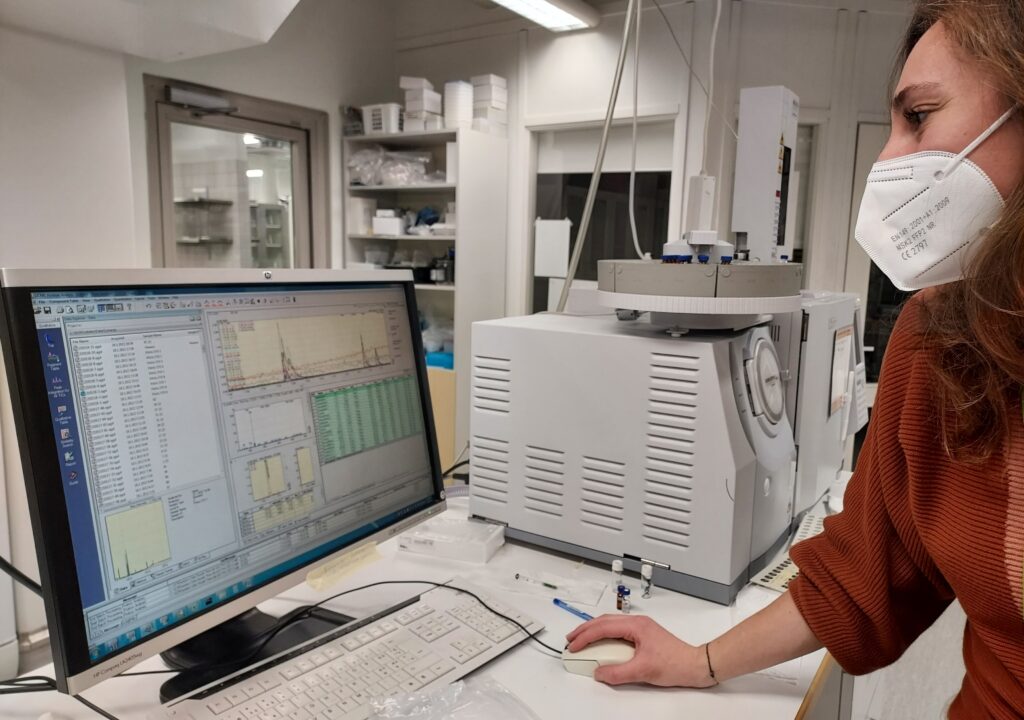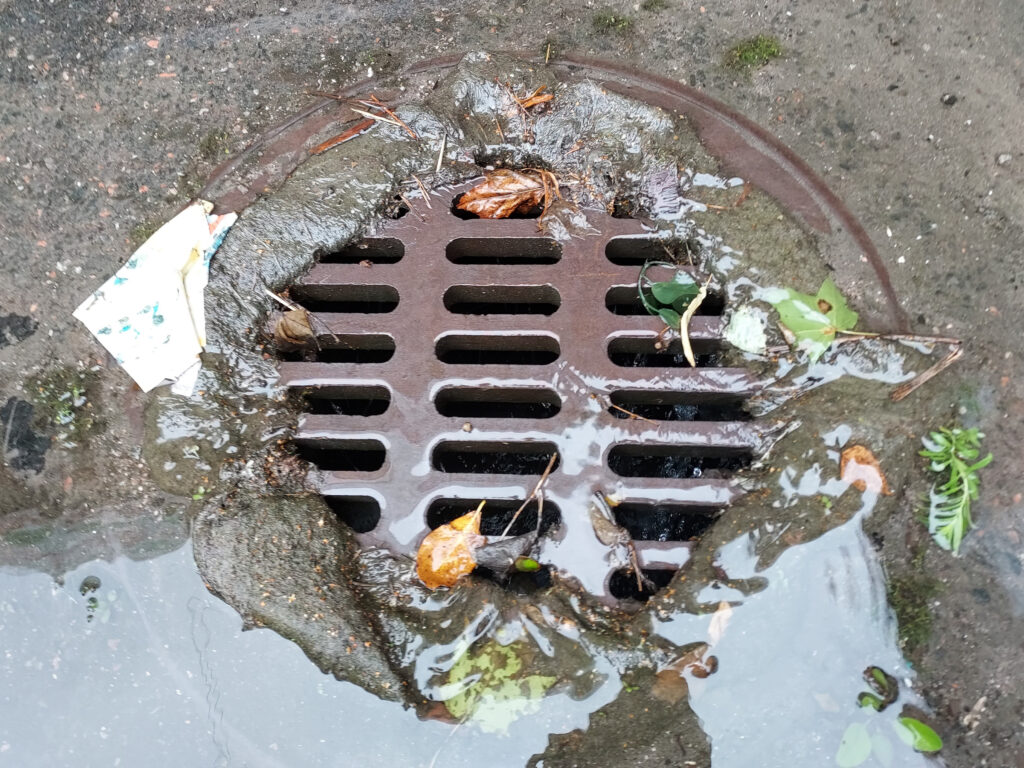
Hair, dog hair and wool are still relatively untapped resources. They have good properties that could be used in a wide range of product applications. They could help to alleviate resource shortages and possibly replace some of the products made from plastic. The project ”Hair 2.0 – Hair and Other Organic Fibres as Substitute for Plastics” has explored the productization of hair and dog hair in three different product categories: oil spill response, greenery building and water purification. All of these require properties that hair, dog hair and wool can provide. Water treatment product development has involved trials of a hair and dog hair material as a stormwater filter. After the trials, the material was tested at the Alma laboratory at the University of Helsinki.
Authors: Paula Nurminen & Costanza Scopetani
Hair is a natural and rich resource
Hair, animal hair and wool are produced everywhere. It is estimated that a city of 100 000 inhabitants produces about 10 000 kg of hair per year (Gupta 2014, 11). In Finland alone, the amount of hair produced is estimated to be 2.8 million kg, with dog hair alone accounting for much of this waste (Nurminen 2022). Similarly, up to 70-90% of sheep wool generated in Finland is considered waste, with almost 500 tons produced annually (Myssyfarmi 2023; Kovalainen 2022, 7).
From a sustainability perspective, it would be good to use these unique materials with good properties for useful product applications where these properties are needed. The commercialization of waste and the development of a sustainable business from it is important from an environmental point of view, and the fact that organic materials could be used as a substitute for plastics, for example in water treatment, would also be of great benefit from an environmental point of view.
Despite the abundance of hair, it is underutilized and is often added to municipal waste (Gupta 2014, 1). Hair has unique properties, such as chemical composition, strength, and flexibility, which make it a valuable resource (Gupta 2014, p. 2). The structure of hair and wool allows it to absorb harmful substances, including metals, oil, and organic compounds, from water, making it an affordable and renewable alternative to traditional water purification methods. (Kovalainen 2022, 4).
Hair has been tested in water filtration
The Hiukka 2.0 project has conducted water filtration experiments using hair and dog hair mats. The tests have been carried out together with Hiukka Oy, the owner of the Hiukka Hyvä brand. Hair material was placed around storm drains in the City of Lahti during the summer of 2022. The University of Helsinki’s Alma laboratory tested the hair and dog hair filter used in a stormwater drain using a clean product as a reference material. (LAB University of Applied Sciences 2023.)
The study analyzed hair mats exposed to the environment and unused hair mats (control) to determine if the hair mats were able to absorb or release pollutants from and to the environment. The pollutants analyzed included phthalates, acetyl tributyl citrate, and polycyclic aromatic hydrocarbons (PAHs). Phthalates are a group of chemicals used in several everyday consumer products and are known to be endocrine disruptors that can damage the endocrine system affecting the growth and reproduction of humans and many other organisms (Fan et al., 2020, Sung et al., 2022). Acetyl tributyl citrate is used as a substitute for phthalates and is not considered an endocrine disruptor (Arrieta et al., 2014; Johnson, 2002), but further studies on its potential toxicity are ongoing, and there is evidence of its potential risks for humans and the environment (Muhammad et al. 2018; Rasmussen et al. 2017a; Rasmussen et al. 2017b). PAHs are a group of mutagenic and/or carcinogenic compounds originating from the incomplete combustion of organic materials such as fossil fuels, and they are considered ubiquitous in the environment (Andersson & Achten 2015; Kim et al. 2013; Yebra-Pimentel et al. 2015).

Picture 1. A rainwater filter made of hair and dog hair material in a product trial in a parking lot in Lahti. (Photo: Paula Nurminen)
The study found that some PAHs were detected in used hair mat samples but not in control samples. Meanwhile, the hair mats had significantly lower concentrations of some of the phthalates and of acetyl tributyl citrate than the control samples.
This is not surprising since literature studies have confirmed the occurrence of phthalates and other plasticizers in several hair products, and the hair with which the hair mats are made is most likely contaminated with these substances, which can be released into the environment once the hair mat is put into use.
Overall, the study shows that hair mats can represent either a sink or a source of contaminants to the environment and points out the need to carry out further studies to assess the applicability of hair mat materials.
References
Andersson, J. T., & Achten, C. 2015. Time to Say Goodbye to the 16 EPA PAHs? Toward an Up-to-Date Use of PACs for Environmental Purposes. Polycyclic Aromatic Compounds. Vol. 35(2–4), 330–354. Cited 28 Mar 2023. Available at https://doi.org/10.1080/10406638.2014.991042
Arrieta, M. P., López, J., Rayón, E., & Jiménez, A. (2014). Disintegrability under composting conditions of plasticized PLA–PHB blends. Polymer Degradation and Stability. Vol. 108, 307–318. Cited 28 Mar 2023. Available at https://doi.org/10.1016/j.polymdegradstab.2014.01.034
Fan, Y., Qin, Y., Chen, M., Li, X., Wang, R., Huang, Z., Xu, Q., Yu, M., Zhang, Y., Han, X., Du, G., Xia, Y., Wang, X., & Lu, C. 2020. Prenatal low-dose DEHP exposure induces metabolic adaptation and obesity: Role of hepatic thiamine metabolism. Journal of Hazardous Materials. Vol. 385, 121534. Cited 28 Mar 2023. Available at https://doi.org/10.1016/j.jhazmat.2019.121534
Gupta, A. 2014. Human Hair ‘‘Waste’’ and Its Utilization: Gaps and Possibilities. Journal of Waste Management. Hindawi Publishing Corporation. Cited 28 Mar 2023. Available at http://dx.doi.org/10.1155/2014/498018
Johnson, W. 2002. Final report on the safety assessment of Acetyl Triethyl Citrate, Acetyl Tributyl Citrate, Acetyl Trihexyl Citrate, and Acetyl Trioctyl Citrate. International Journal of Toxicology. Vol. 21(SUPPL. 2), 1–17. Cited 28 Mar 2023. Available at https://doi.org/10.1080/10915810290096504
Kim, K. H., Jahan, S. A., Kabir, E., & Brown, R. J. C. 2013. A review of airborne polycyclic aromatic hydrocarbons (PAHs) and their human health effects. Environment International. Vol. 60, 71–80. Cited 28 Mar 2023. Available at https://doi.org/10.1016/j.envint.2013.07.019
Kovalainen, A-M. 2022. Lampaanvillakuitujen pintaominaisuudet ja käyttömahdollisuudet vedenpuhdistuksessa. Kemiantekniikan kandidaatintyö. Lappeenrannan-Lahden teknillinen yliopisto LUT.
LAB University of Applied Sciences. 2023. Hiukka 2.0 – Hair and other organic fibers as a substitute for plastic. Cited 28 Mar 2023. Available at https://lab.fi/en/project/hiukka-20-hius-ja-muu-orgaaninen-kuitu-muovin-korvaajana
Muhammad, S., Zhang, Z., Pavase, T. R., & Guo, H. 2018. Long-term exposure of two plasticizers di (2-ethylhexyl) phthalate (DEHP) and acetyl tributyl citrate (ATBC): Toxic effects on gonadal development and reproduction of zebrafish (“Danio rerio”). Indian Journal of Geo-Marine Sciences. Vol. 47(4), 789–797.
Myssyfarmi. 2023. Tiedote: Suomalaista villaa haaskataan suuria määriä. Citied 28 Mar 2023. Available at https://myssyfarmi.fi/blogs/news/tiedote-suomalaista-villaa-haastakaan-suuria-maaria
Nurminen, P. 2022. Hiukka koirankarvasta ja sivutuotelainsäädännöstä. LAB Focus. Citied 28 Mar 2023. Available at https://blogit.lab.fi/labfocus/hiukka-koirankarvasta-ja-sivutuotelainsaadannosta/
Rasmussen, L. M., Sen, N., Liu, X., & Craig, Z. R. 2017a. Effects of oral exposure to the phthalate substitute acetyl tributyl citrate on female reproduction in mice. Journal of Applied Toxicology. Vol. 37(6), 668–675. Cited 28 Mar 2023. Available at https://doi.org/10.1002/jat.3413
Rasmussen, L. M., Sen, N., Vera, J. C., Liu, X., & Craig, Z. R. 2017b. Effects of in vitro exposure to dibutyl phthalate, mono-butyl phthalate, and acetyl tributyl citrate on ovarian antral follicle growth and viability. Biology of Reproduction. Vol. 96(5), 1105–1117. Cited 28 Mar 2023. Available at https://doi.org/10.1095/biolreprod.116.144691
Sung, C. R., Kang, H. G., Hong, J. Y., & Kwack, S. J. 2020. Citrate ester substitutes for di-2-ethylhexyl phthalate: In vivo reproductive and in vitro cytotoxicity assessments. Journal of Toxicology and Environmental Health – Part A: Current Issues. Vol. 83(17–18), 589–595. Cited 28 Mar 2023. Available at https://doi.org/10.1080/15287394.2020.1798832
Yebra-Pimentel, I., Fernández-González, R., Martínez-Carballo, E., & Simal-Gándara, J. 2015. A critical review about the health risk assessment of pahs and their metabolites in foods. Critical Reviews in Food Science and Nutrition. Vol. 55(10), 1383–1405. Cited 28 Mar 2023. Available at https://doi.org/10.1080/10408398.2012.697497
Authors
Paula Nurminen is working at LAB University of Applied Sciences as a project coordinator and works as a project manager in Hiukka 2.0 project.
Costanza Scopetani is working at the Chemistry Department of the University of Florence (Italy) as a postdoctoral researcher and project leader. At the time of this study, she was working as a postdoctoral researcher at the Faculty of Biological and Environmental Sciences at the University of Helsinki.
Illustration: Costanza Scopetani making research at the University of Helsinki’s Alma laboratory in January 2022. (Photo: Paula Nurminen)
Published 10.5.2023
Reference to this article
Nurminen, P. & Scopetani, C. 2023. Water filtering with hair. LAB Pro. Cited and date of citation. Available at https://www.labopen.fi/lab-pro/water-filtering-with-hair/






